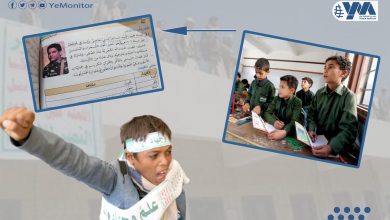
Yemen Monitor / Exclusive:
The Mokha Center for Strategic Studies has published an analytical paper discussing the Yemeni Presidential Leadership Council’s failure to govern the country three years after its formation, highlighting its inability to unify military forces, the collapse of the economy, growing corruption, and a decline in both international and regional support.
The paper also pointed to the military expansion of the Southern Transitional Council (STC) in the south, and the Council’s failure to confront the Houthi threat despite favorable regional developments.
It stated that three years after its establishment, the Presidential Leadership Council has failed to fulfill most of its assigned tasks and responsibilities. Its efforts to integrate military formations under the command of the Ministry of Defense have stalled. Moreover, the STC has taken advantage of its presence under the Council’s umbrella to expand militarily in the governorates of Shabwa, Abyan, and Socotra, while reinforcing its presence in Hadramawt—repeatedly threatening to overrun the area.
The Council has also failed to manage the economic file, as it was unable to consolidate financial resources or prevent their looting and mismanagement. It lost most of the resources it once controlled, especially after the Houthis succeeded in halting oil exports since October 2022. This led to a significant collapse of the Yemeni rial, which lost over 60% of its value, and the living conditions of citizens deteriorated catastrophically.
Alongside the economic collapse, corruption has worsened, with the Council’s chairman and most of its members racing to acquire more financial resources. The gap widened between state leaders residing abroad—who receive monthly stipends under what is known as the “living allowance list”—and the rest of the citizens.
The paper also noted the decline in support from the two Arab Coalition countries, whose focus has shifted toward other regional crises. The same applies to international support, especially humanitarian aid. The Red Sea attacks boosted the Houthis’ domestic and international profile, presenting them as a significant actor. All of this has led to the further marginalization of the Presidential Council and the shrinking of its influence.
The analytical paper put forward several recommendations, including reforming the current council by unifying its members’ vision around the priority of recapturing Sana’a and deferring the southern issue, as well as integrating military formations under a unified command.
It also recommended restructuring the Council by reducing its members to three—a president, one representative from the north, and another from the south—though this option risks serving the STC’s separatist agenda.
Another recommendation was to replace the Council entirely, either by reinstating former President Abdrabbuh Mansur Hadi and his former Vice President Ali Mohsen Al-Ahmar, or by authorizing a new military leadership to oversee both political and military operations.
Among the recommendations was also the formation of a military council made up of field commanders capable of confronting the Houthis and restoring stability.
The paper linked the viability of these alternatives to the positions of Saudi Arabia and the UAE—the Council’s main backers—as well as to developments in the economic situation and the trajectory of negotiations with the Houthis.
It also warned that the continuation of internal divisions and deteriorating conditions may push the country toward unconventional solutions, such as granting the military full authority to lead the next phase.




